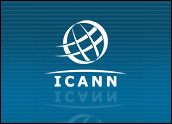
Out there on the branding battlefields, it’s simply do or die, as a brand image is eitherhypervisible or mortally lost in oblivion. Commanding success for any idea on the global scene demands universal e-commerce access that is only deliverable by a cybername identity, as it’s the only key to open the site.
Without it, accessibility to any cyberempire is simply doomed, dragging expansion dreams into cyberoblivion. Millions of million-dollar websites have slipped into the abyss, and the proof is sitting right on Google.
Super-success in cyberbranding lies in the sophisticated deployment of a cybernaming strategy to ensure the 100 percent exclusive ownership of a powerful domain name identity to work as a magical key, so it may open an undiscovered universe of billions of unknown customers around the world.
Achieving a global cyberpresence has now become an ultrasophisticated process, and it remains one of the most valuable digital assets. This global presence is no longer a creative issue to be addressed by logo-centric, slogan-happy branding; rather, it is founded on visibility, access and undisputed ownership, which you simply either have or don’t.
Take Stock of the Situation
During the dot-com boom, a million domain names were registered a day. The billions of dollars wasted created a chapter in corporate branding — the proof stands still in the cemetery of dead names.
Today, with naming concepts and strategies fully matured, there are some very powerful, universally recognized domain names that skate around in the e-commerce arena, open complex gates and passages, and carve powerful, highly lucrative positions.
Following are some key questions to ask at the next boardroom meeting.
Evaluation: How strong is the cybername identity in e-commerce today? Is it a magical key or a rusty screwdriver? The duplication factor, combined with weak and confusingly similar names, will bury the best campaigns. Without a very deep understanding of this highly specialized subject, a brand can simply be headed toward oblivion.
Corporations can show off their brand identities, but many cannot prove with great confidence their direct ownership of a specific name identity. Identities like Sony, Panasonic, Rolex and Microsoft are not in question. Both in cyberspace and in print, their unique power of identity is clearly obvious.
There is no question about their exclusive ownership claim to their identity in the global populace, while millions of other look-alike and sound-alike names are simply owned by millions of other Toms, Dicks and Harrys. It only takes a second on Google to prove the ownership of any identity, and this raises an important question: Why share an identity with thousands of others?
Superiority: How is the identity positioned, and what message and personality does it communicate through its linguistics and alpha-structure? Each emits its own unique signals, while demanding typing. General branding exercises cannot be substituted for these complex naming analyses, and the strictest application of the Five Star Standard of Naming available on the Internet is a must.
Without character and personality that resonaet with the global customer, a name is simply lost in the crowd;without linguistics, it ends up at the bottom of search engine results.
Complexity: What about domainization, as multiple domain names create multiple problems in multiple markets? How does the master naming architecture apply to a business? Cyberbranding is an extremely global phenomenon — market positioning is much more critical than profit maximization, while mind share is more important than market share.
Where is the centrality of the selling proposition, and how is it being projected? Conclusion: The current turbocharged, hyper-accelerated global image repositioning is causing shifts and creating new chasms between countries. This is a void to be filled with new players, new ideas and new global icons.
ICANN: What about new gTLD? This new, revolutionary US$187,000-per-domain-name program offers some amazing solutions, as the fastest and most economical way to acquire an exclusive global name identity for worldwide e-commerce.
But this game is very intricate, demanding sophistication in corporate nomenclature plus image leadership skills. In 2011, ICANN plans to process 1,000 “proposed name” applications. This will make gTLD expertise the hottest topic with respect to new billings for advertising and strategic consulting agencies — provided they embrace the corporate nomenclature rules and are able to articulate the crucial issues to their top clients.
What’s needed are specific naming solutions in the context of today’s global complexity and the most stringent application of ICANN rules. To cope with timelines within the new gTLD space, smart agencies are starting to form strategic alliances to capture this high-profile cyberbranding business.
Take the Blinders Off
Currently, with 99 percent of cybername identities stuck in traffic jams, a frank and very candid CEO-level discussion is required. Denials and refusal to face up to reality will simply keep a company’s e-commerce presence in oblivion — guaranteed.
Marketing is global; burn all the books that say otherwise, as a billion brand new websites are coming like a tsunami from the emerging world. The challenge for executives is to embrace the future head on: Acquire a deeper understanding of the visibility subject today, and start studying deeply the new gTLD platform from ICANN. Now, what’s needed is hypervisibility.
Naseem Javed, founder of ABC Namebank, is recognized as a world authority on image positioning and global naming complexities. He is currently helping corporations on ICANN’s new gTLD cyberplatforms. He can be reached at [email protected].





















































Social Media
See all Social Media